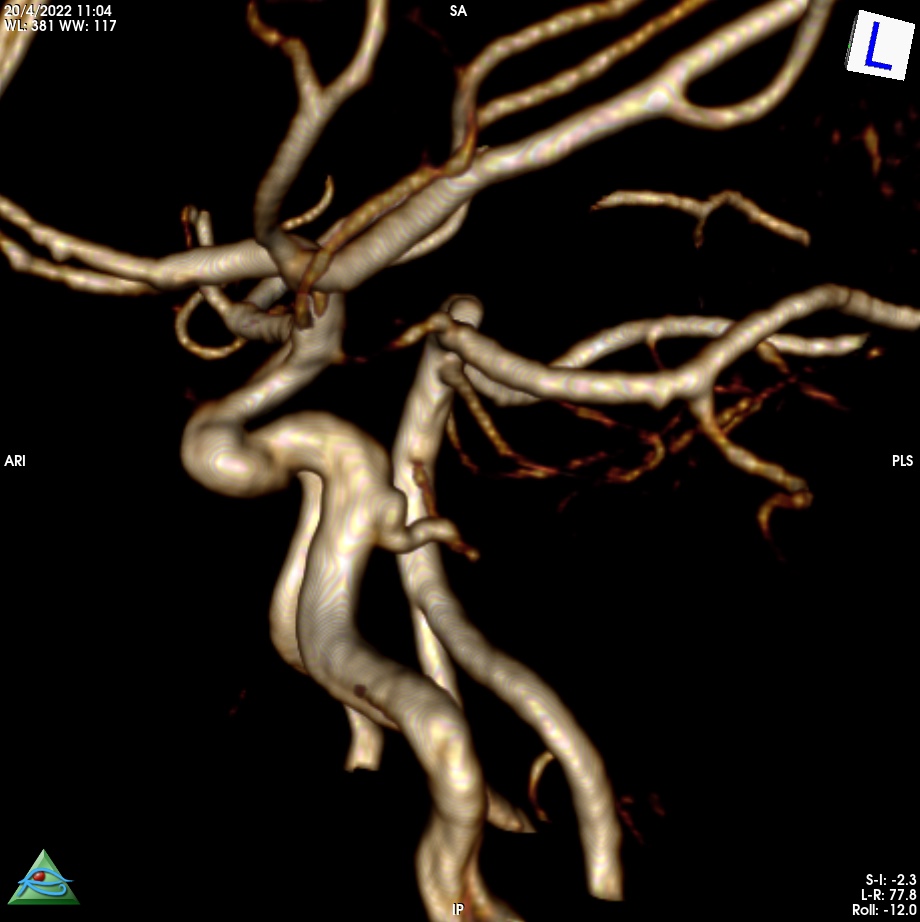

Saltzman first described the angiographic appearance of PTA and its classification into three types according to angiographic appearance.
The Saltzman type I PTA connects the basilar artery at the level between superior cerebellar artery (SCA) and AICA. The proximal basilar artery and posterior communicating artery are usually hypoplastic and subsequently both posterior cerebral arteries and SCAs are supplied through the PTA.

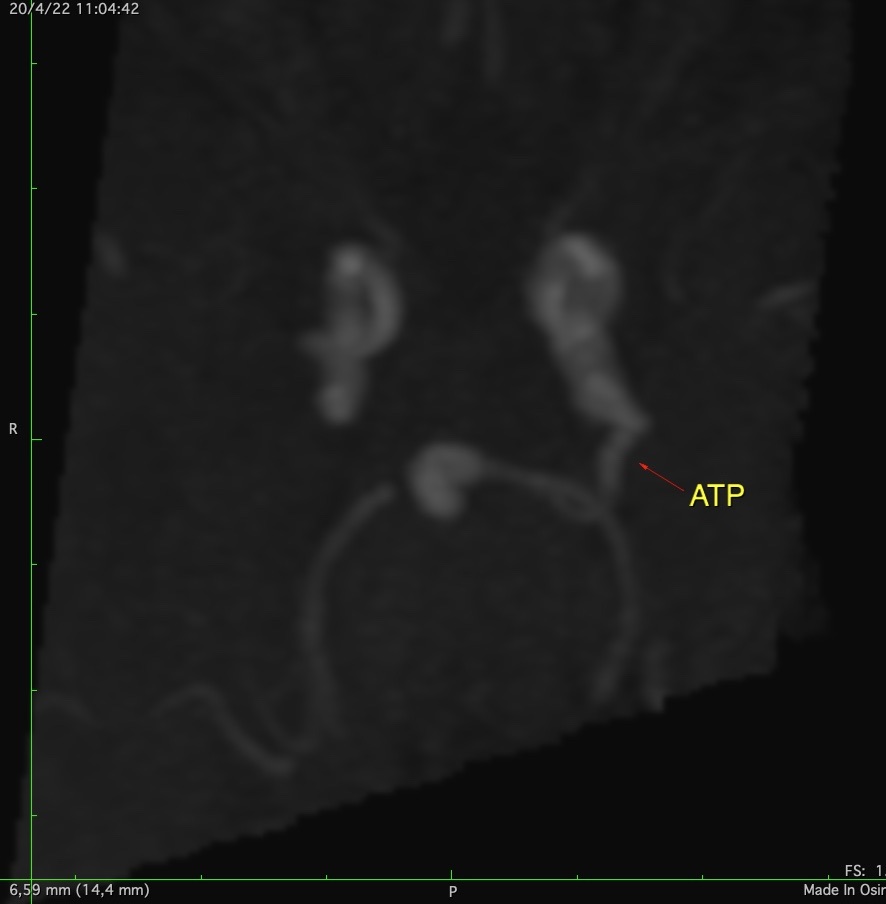

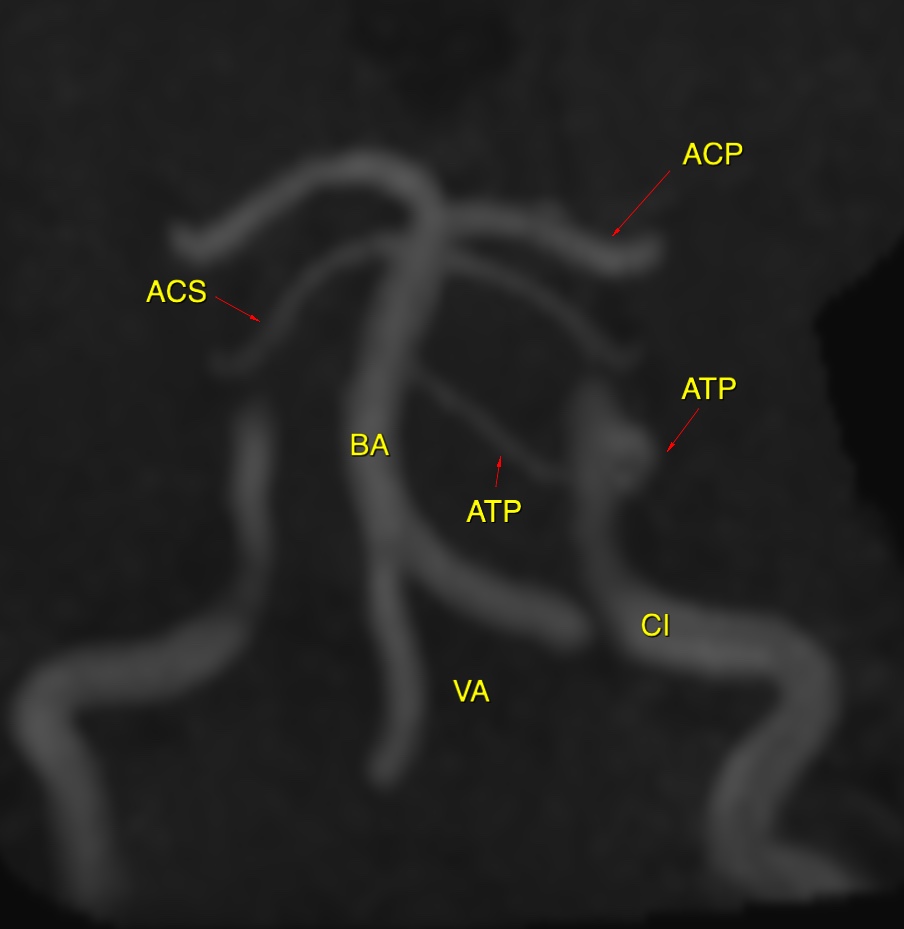
The Saltzman type II PTA connects the basilar artery above the origin of the SCAs. The posterior communicating arteries are present and provide the posterior cerebral arteries.

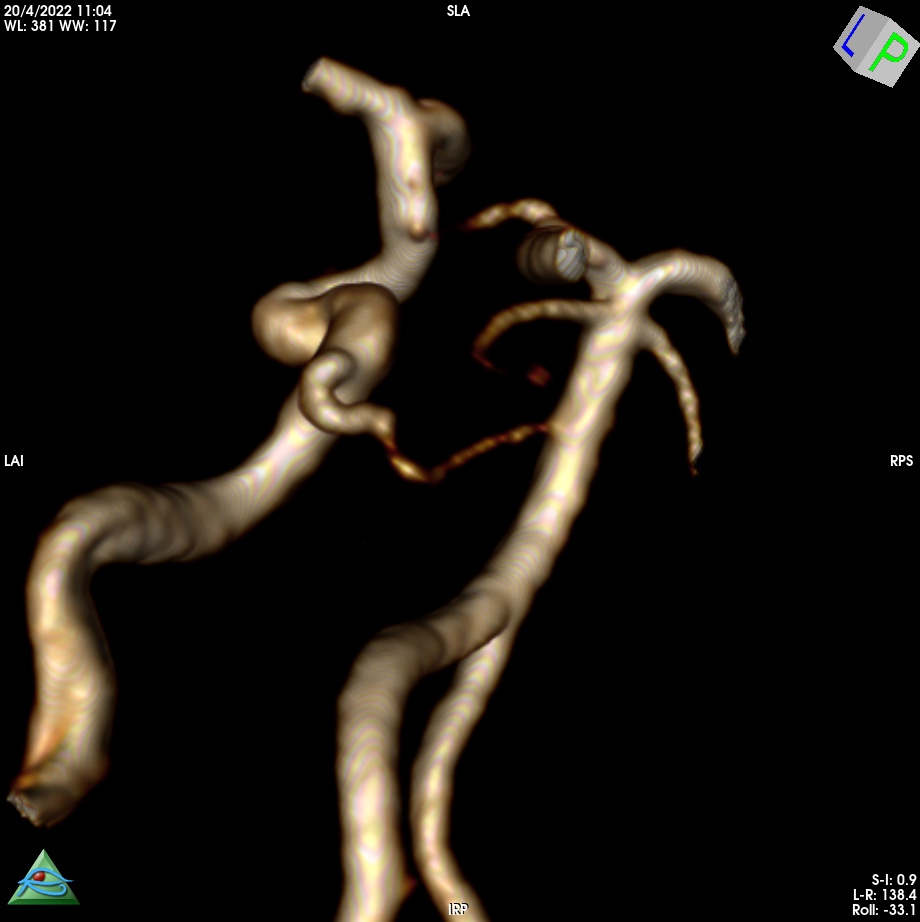
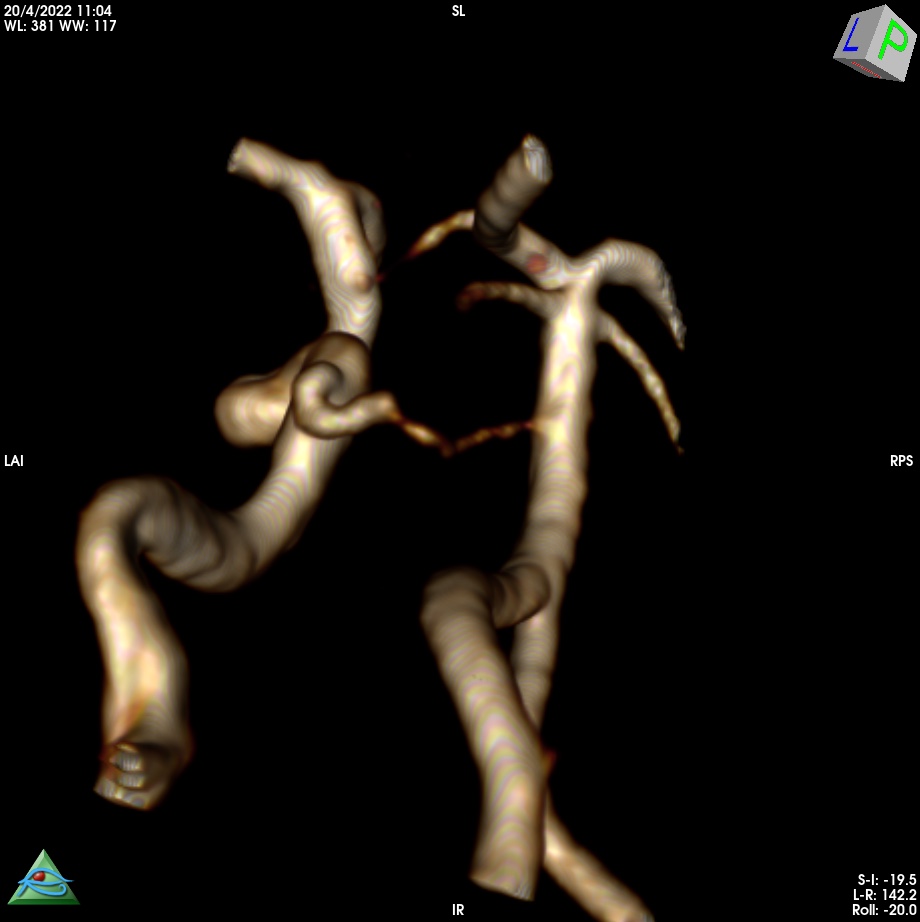

The Saltzman type III PTA is considered a combination of types I and II. Ali et al. reviewed Saltzman classification and included variations of PTA in type III, in which there is no connection of the basilar artery. The variations of PTA type III arise from the internal carotid and terminate directly as the SCA (type IIIa), AICA (type IIIb), and PICA (type IIIc) without interposition of the basilar artery.
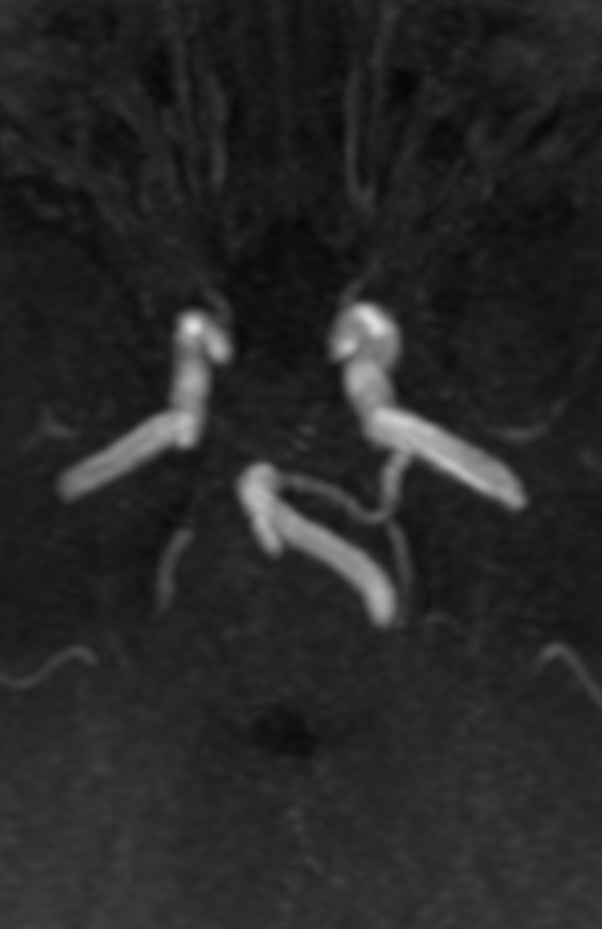
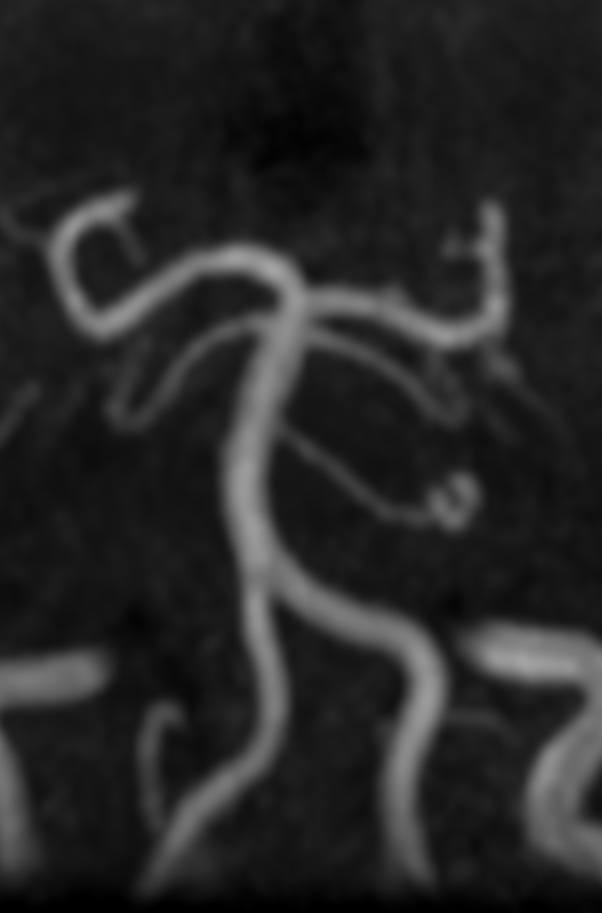
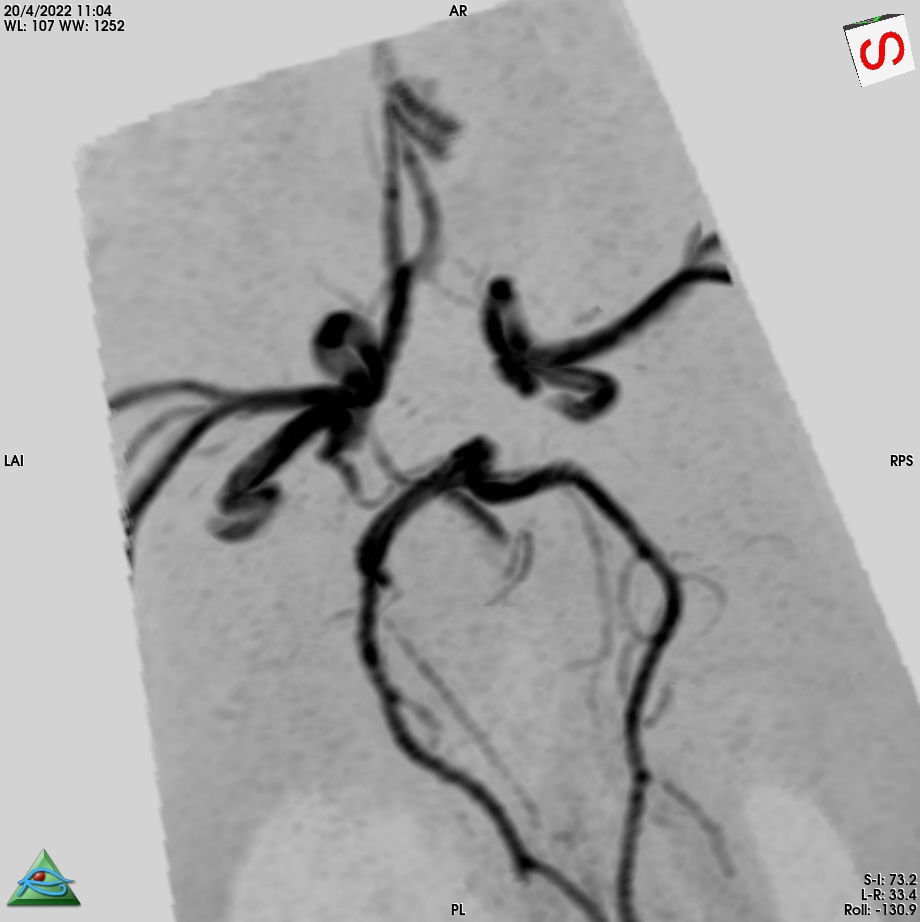
In one study of 4.650 patients that underwent brain MRA, the prevalence of each type using the Saltzman classification was as follows: type I, 24%; type II, 16%; type III, 60%
Many authors state in their discussion that persistent trigeminal, hypoglossal, and proatlantal arteries have been associated with aneurysms distant from the persistent vessels. Such an association is dubious. The prevalence of aneurysms associated with persistent trigeminal artery is approximately 3%, which is similar to the prevalence of aneurysms in the general population.
Reference:
Chen YC, Li MH, Chen SW, Hu DJ, Qiao RH. Incidental findings of persistent primitive trigeminal artery on 3-dimensional time-of-flight magnetic resonance angiography at 3.0 T: an analysis of 25 cases. J Neuroimaging. 2011;21(2):152–8.
Cloft HJ, Razack N, Kallmes DF. Prevalence of cerebral aneurysms in patients with persistent primitive trigeminal artery. J Neurorsurg 1999;90:865–867